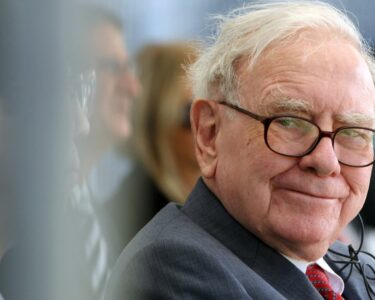LONDON — The Bank of England on Thursday kept its main interest rate unchanged at 5.25% and said monetary policy is “likely to need to be restrictive for an extended period of time.”
The Monetary Policy Committee voted 6-3 in favor of holding rates steady for a third consecutive meeting. The three dissenting members favored a further 25 basis point hike to 5.5%.
U.K. headline inflation fell to an annual 4.6% in October, its lowest point in two years, while wage growth has also undershot expectations of late but at more than 7% still remains uncomfortably high for the central bank, as it looks to bring inflation down toward its 2% target sustainably.
The MPC noted in Thursday’s report that “key indicators of U.K. inflation persistence remain elevated,” although tighter monetary policy is leading to a looser labor market and weighing on activity in the real economy.
Real U.K. GDP was flat in the third quarter, in line with the Monetary Policy Committee’s projections, but the economy unexpectedly shrank by 0.3% month on month in October.
The central bank ended a run of 14 straight hikes in September, after lifting its benchmark rate from 0.1% to a 15-year high of 5.25% between December 2021 and August 2023.
The U.S. Federal Reserve on Wednesday revealed that policymakers were penciling in at least three interest rate cuts in 2024, offering a dovish surprise that sent global stock markets surging.
However, the MPC once again pushed back against market expectations, reiterating that rates will need to stay in restrictive territory for an extended period of time in order to return inflation to target over the medium term.
“As illustrated by the November Monetary Policy Report projections, the Committee continues to judge that monetary policy is likely to need to be restrictive for an extended period of time,” the MPC said.
“Further tightening in monetary policy would be required if there were evidence of more persistent inflationary pressures.”
The November report projected that the consumer price index will average around 4.75% in the fourth quarter of 2023, before dropping to around 4.5% in the first quarter of next year and 3.75% in the second quarter.
At the same time, GDP is expected to grow by just 0.1% in the fourth quarter after flatlining in the third.
The bank last week warned that although household finances are faring better than expected, higher borrowing costs have yet to fully feed through to the economy.
Suren Thiru, economics director at ICAEW, said the Thursday decision was further confirmation that interest rates have peaked, but suggested that the bank was at risk of keeping monetary policy too tight for too long, given the fragile economic backdrop.
“The Bank’s rhetoric on rates is unnecessarily hawkish given slowing wage growth and a deteriorating economy, raising fears that it will keep rates high for too long, unnecessarily damaging an already struggling economy,” Thiru said.
“With inflation trending downwards and the economy at risk of recession, the case for interest rate cuts is likely to grow over the coming months. Against this backdrop, the Monetary Policy Committee could well start loosening policy by next summer.”
Hetal Mehta, head of economic research at St James’s Place, said that the bank’s decision to communicate a hawkish message sets it “markedly apart from the Fed.”
“Underlying inflation is still uncomfortably high and the recent pricing of multiple rate cuts from early next year was clearly an easing of financial conditions that the BoE felt the need to push back against,” she said.
“The fall in wage inflation so far is not enough to be consistent with the 2% inflation target.”
Despite concerns about persistently tight monetary policy tipping the economy into recession, a Treasury spokesperson said by email that the U.K. had “turned a corner” in the fight against inflation. The spokesperson noted that real wages are rising, but said the country must “keep driving inflation out of the economy to reach our 2% target.”






